Collard greens are a nutritious, delicious staple of Southern cuisine in the United States. These dark, leafy greens are a member of the cabbage family, with flavors between cabbage and kale. However, can dogs eat collard greens and partake in this healthy signature side dish?
While these vegetables are generally healthy, the answer isn’t a simple yes or no. Read on to learn whether dogs can eat collard greens and what to know before making some for your pet.

Collard greens are a nutritious, delicious staple of Southern food in the United States
©chantel/Shutterstock.com
Can Dogs Eat Collard Greens?
While collard greens aren’t inherently harmful to dogs, they shouldn’t regularly eat large amounts of the dish. Enjoyed in moderation, collard greens are an excellent source of nutrients such as potassium, magnesium, and vitamins A, K, and C.
However, not all parts or preparation styles of collard greens are suitable for your pup. The dish can potentially cause concerns for dogs experiencing kidney or bladder issues. There’s also the matter of preparation to consider, as some parts of collard greens are healthier for dogs to eat than others.
Can dogs eat collard greens cooked?
Cooked collard greens are the best options for your dog. Collard greens are a dense, dark green vegetable that can challenge a dog’s digestive system. Cooking fresh collard greens by steaming or sauteeing will break down the hardy fibers and make them easier to digest while preserving their high nutritional value.
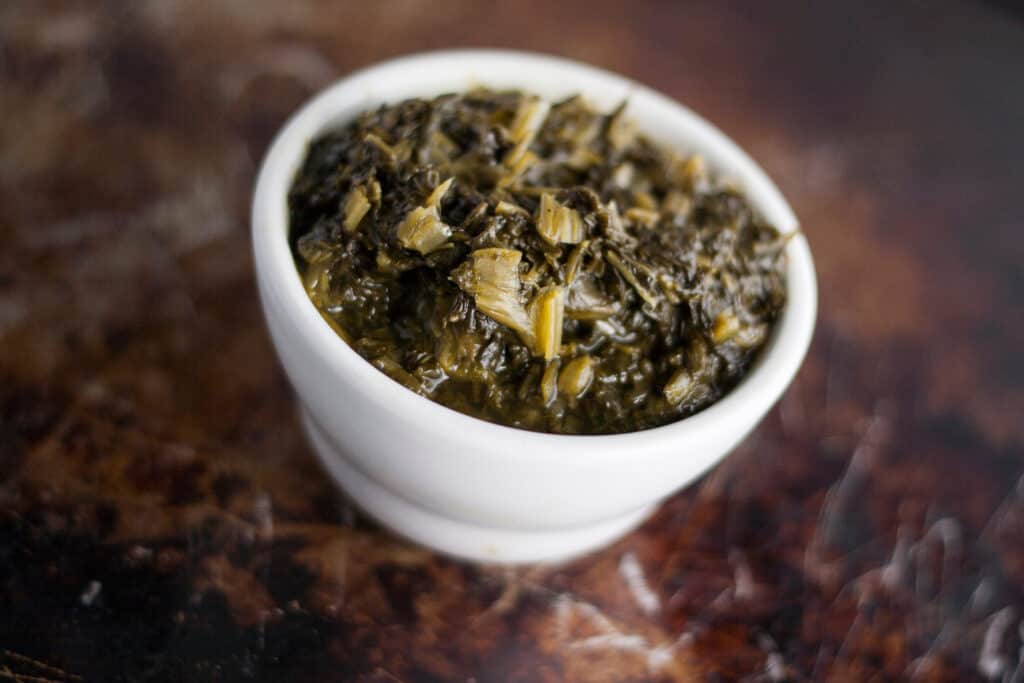
Cooked collard greens are the best options for your dog.
©Holly Rae Garcia/Shutterstock.com
Can dogs eat collard greens raw?
Raw collard greens and other leafy greens can upset your dog’s stomach due to their high fiber content. Raw collard greens also contain spines, stems, and leaf stalks that are even more difficult to digest and can sometimes cause diarrhea. These are typically removed during the cooking process.
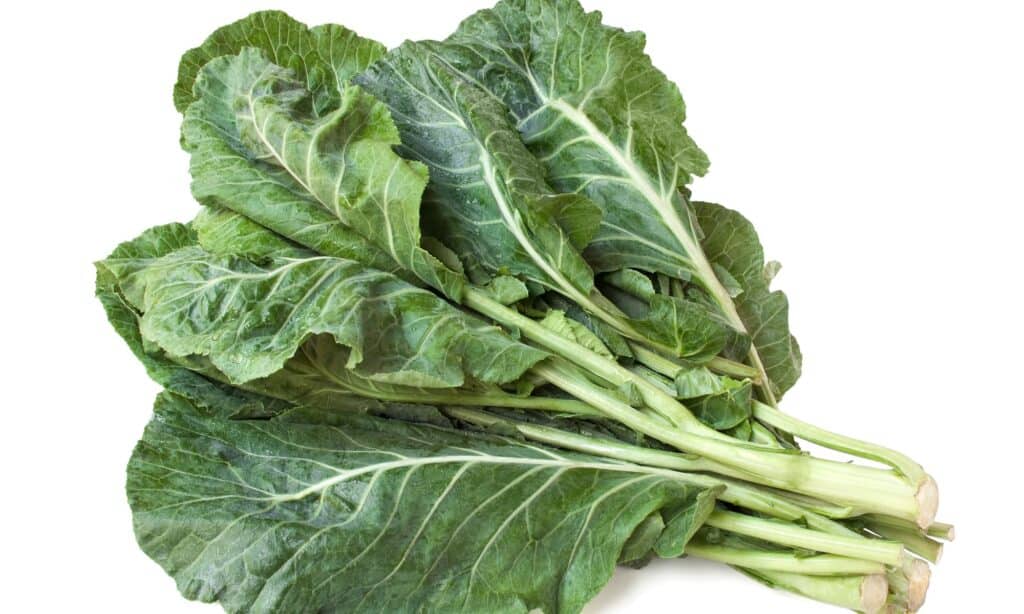
Raw collard greens and other leafy greens can upset your dog’s stomac.
©iStock.com/EvergreenPlanet
Can dogs eat canned collard greens?
Canned collard greens often contain high sodium levels or other preservatives that might harm your dog. Opt for fresh greens and cook them at home instead of opening a can of these vegetables.
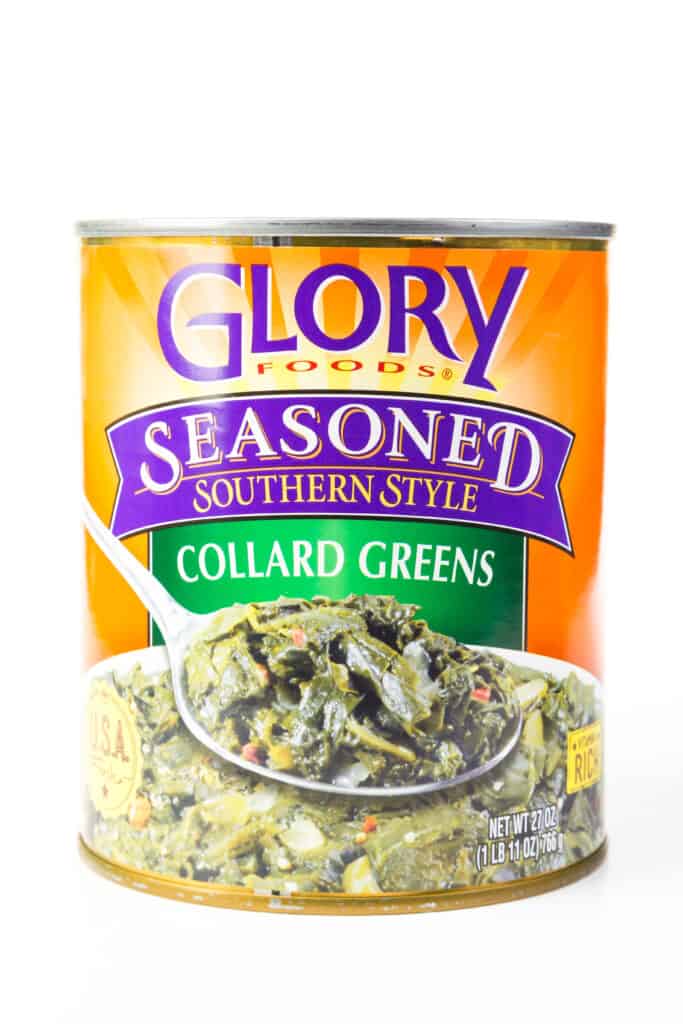
Opt for fresh greens and cook them at home instead of opening a can of these vegetables.
©Warren Price Photography/Shutterstock.com
Are Collard Greens Good for Dogs?
When properly prepared and served in moderation, dark leafy greens, like collards, are an excellent addition to your dog’s diet. They contain many nutrients, such as vitamins A, K, and C, folic acid, riboflavin, and fiber. Collard greens also are a good source of calcium, which is essential for bone health.
Benefits of Feeding Dogs Collard Greens
The prebiotic fiber in collard greens helps regulate your dog’s digestive system and promotes healthy metabolic function in the gut. The glucoraphanin in collard greens also helps promote the growth of beneficial gut bacteria while slowing the development of more invasive varieties, preventing stinky gas and stools. The veggies are also full of water, preventing constipation and keeping your pup correctly hydrated.
Collard greens have been shown to lower cholesterol levels and reduce the risk of heart disease in dogs. The B vitamins present can also promote cardiovascular health and help reverse blood vessel damage.
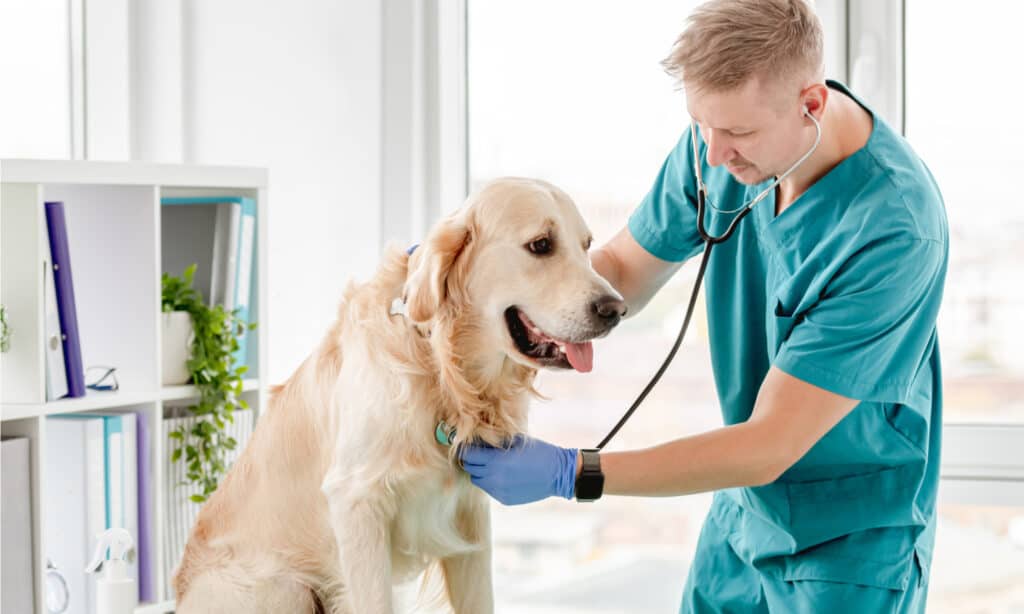
Collard greens have been shown to lower cholesterol levels and reduce the risk of heart disease in dogs.
©Tatyana Vyc/Shutterstock.com
Cancer affects more than 50% of all dogs. Collard greens help fight free radicals in your dog’s body with powerful antioxidants, preventing damage and keeping your pup’s cells in top shape. Research also shows that glucoraphanin in collard greens can reduce dogs’ risk of developing cancer.
Risks of Feeding Dogs Collard Greens
The main concern in your dog eating collard greens lies in the veggie’s high levels of isothiocyanates and calcium oxalate. These two compounds can potentially cause kidney and bladder stones, a painful buildup of undigested materials in the body’s waste system. If your dog is currently suffering from stone-related issues, opting out of feeding them collard greens is best.
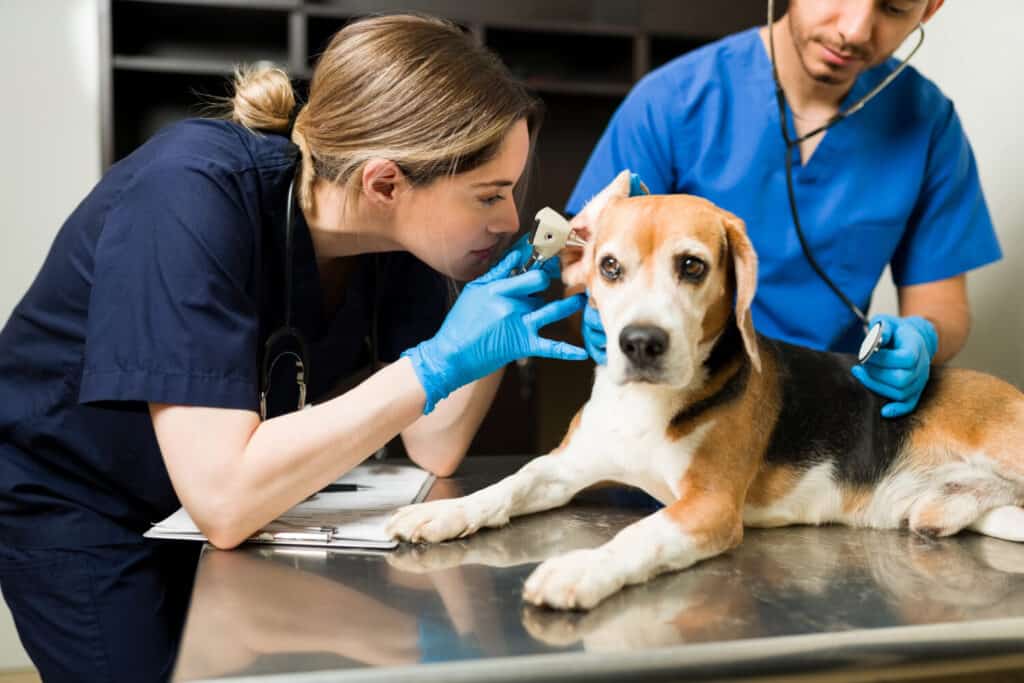
Consult your veterinarian for individual recommendations regarding the correct portion of collard greens to feed your dog daily.
©Beach Creatives/Shutterstock.com
It’s also essential to keep your dog’s portion sizes moderate. Consult your veterinarian for an individual recommendation, regarding the correct portion of collard greens to feed your dog daily. Your dog’s weight and activity levels will also inform the quantity of collard greens it should eat.
How to Cook Collard Greens for Dogs
With an understanding of the nutritional benefits of feeding your dog collard greens, here’s how best to prepare the dish for a pup.
Start with raw collard greens, stripping the leafy portions away from the stalks. Toss the stalks as they are too fibrous for dogs to digest. Steam the collard leaves for about 10 minutes, or boil them for five minutes. Voila! The greens are ready to add to your dog’s bowl.

Steam the collard leaves for about 10 minutes, or boil them for five minutes.
Voila
! The greens are ready to add to your dog’s bowl.
©iStock.com/johnquinn
Keep in mind that not all dogs will appreciate a mountain of vegetables suddenly added to their dish. Introduce small portions and slowly increase the amount until you reach the serving size recommended by your vet. if your pooch is not impressed with collards, you can always try other leafy greens.

Not all dogs will appreciate a mountain of vegetables suddenly added to their dish.
©Eric Isselee/Shutterstock.com
Collard greens are a worthy addition to your dog’s diet and provide a host of nutrients, minerals, and vitamins. With proper preparation – and maybe encouraged by an additional treat as a reward – your dog may develop a taste for veggies and enjoy all the benefits collard greens provide.
Up Next
The photo featured at the top of this post is © iStock.com/EvergreenPlanet
Ready to discover the top 10 cutest dog breeds in the entire world?
How about the fastest dogs, the largest dogs and those that are -- quite frankly -- just the kindest dogs on the planet? Each day, AZ Animals sends out lists just like this to our thousands of email subscribers. And the best part? It's FREE. Join today by entering your email below.
Sources
- akc.org, Available here: https://www.akc.org/expert-advice/nutrition/benefits-high-fiber-dog-foods/
- a-z-animals.com, Available here: https://a-z-animals.com/blog/the-healthiest-vegetables-dogs-can-actually-eat-and-those-to-avoid/
- sciencedirect.com, Available here: https://www.sciencedirect.com/topics/nursing-and-health-professions/glucoraphanin#:~:text=Glucoraphanin%2C%20the%20glucosinolates%20of%20sulforaphane,responsible%20for%20cancer%20preventive%20activity.
- a-z-animals.com, Available here: https://a-z-animals.com/reviews/the-best-urinary-care-dog-food/
Thank you for reading! Have some feedback for us? Contact the AZ Animals editorial team.






